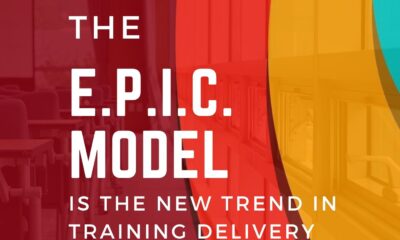Basics
All you need to know about planning.

Planning is a fundamental stage of management.
it represents comprehensive thinking and comparison between different business models to choose the best and most compatible with the available capabilities along with the goals to be achieved.
What is planning?
Planning can be defined as defining the goals that the management seeks to achieve and drawing up plans and programs to achieve those goals, taking into account the available capabilities and the imposed restrictions surrounding the project.
It is also known as “predicting the future and drawing up plans, programs, and policies that ensure the achievement of the specific objectives of the project as efficiently as possible.”
In addition, it is also known that it is choosing from different alternatives to achieve the goals of the organization.
Planning depends on predicting the future, choosing between available alternatives, defining in advance what must be done along with the necessary procedures for its implementation, and when and how to implement, meaning that any precautionary process must include answering the following questions:
- What should be done? (what)
- Where will this project be performed? (where)
- When should this work be done? (when)
- How will this work be performed? (How)
- Why should this work be done? (Why)

Sections of planning:
- Goals: They are the final points towards which the activity of the organization is directed to achieving the goals set for it, meaning that they are future goals that the entity seeks to achieve.
SMART Goals:

- Policies: It is a set of general rules that guide the decision-making process. It is also known as a set of alternatives and methods of work that all officials are committed to in exercising their competence to achieve the objectives of the project, such as production policies, marketing, financing, and personnel.
- Procedures: It is a set of instructions for the implementation and performance of a certain type of work, and it is always linked to the procedures. The idea of simplifying procedures as an entry point for the administrative reform process by studying the procedures for any of the products or services. This means studying the procedures, reorganizing them, modifying the sequencing process, and reducing time and steps, which leads to raising the efficiency of performance. Procedures are considered part of the plans because they aim to choose a specific method among several alternatives.
- Rules: Rules require taking a specific action in a specific situation. They are close to procedures as they guide the decision-making process, however, they don’t include sequential steps for implementing a specific action.
- Programs: Defining the method to implement the plan according to specific timelines.
- Budgets: It is the implementation of the plan in financial form during a specific period of time. Budgets are considered a planning process in addition to being a tool for control. The planning budget of the state or companies is prepared for a fiscal year.
- Strategies: The basic idea of the strategy is multiple activities dealing with defining policy-making, setting plans, leadership and management, in addition to organizing the use of the available resources within a framework that takes into consideration the priorities and best alternatives to achieve specific goals effectively.
The importance of planning:
- Planning is related to future which is uncertain and unclear, then planning becomes necessary to predict what the conditions surrounding the organization will be, in addition to preparing plans and programs to achieve the specific objectives of that organization under any expected future circumstances.
- Good planning leads to making better decisions regarding all project activities, whether in the field of production, marketing or financing.
- Good planning leads to improving the organization’s performance and raising its administrative efficiency.
- Good planning leads to coordinating efforts within the organization to enable it to achieve the objectives set for it more efficiently.
- Good planning leads to the optimal use of both material and human resources, which reduces costs and losses.
- Good planning is the basis for the control process. There is an integration between the functions of planning and control. There is no hope that the plan will succeed unless there is an effective control system.
- Good planning creates initiative managers, not the reactive managers.
Planning Responsibility:
- Planning is the responsibility of every manager in any organization and at all levels. It is the responsibility of the head of the department, the director and the general manager of the organization, thus the responsibility for planning increases at the higher levels.
- Usually, in large organizations, there is a planning department that assists all administrative levels to prepare plans and programs. The planning department sets the master plan, and if the senior management approves it, then it becomes in the form of instructions.
The planning process:

Types of planning:
Planning according to time frame:
- Long-term planning, covering a period of more than five years.
- Medium-term planning, covering a period of time between two and five years.
- Short-term planning, covering a period of time less than two years.
It is noted that long-term planning is less detailed than the rest of the plans, also long-term planning is more prone to errors due to the difficulty of predicting the future conditions of the organization.
Planning according to managerial level:

- Planning at strategic level: It includes a specification of the general basic objectives that the project (or organization) seeks to achieve, and results from this basic plan of the project or the strategic plan of the project, which is the basis for planning at other administrative levels of the project.
- Planning at all administrative levels: Where planning is done at the administrative levels that carry out the activities of certain functions such as production, marketing, personnel, research and development.
Planning starts from the bottom up in the form of goals and they are distributed among the departments until it finally reaches the (Planning Department) and the (Board of Directors) until the goals of all departments and sections are reviewed to develop the master plan, then presented to the Board of Directors for approval and then execution, taking into account the feedback. However, if it is discovered that the plan did not achieve the goals or that the goals are exaggerated, corrective measures are implemented.
What are the most important components of effective planning?
There are a set of basic considerations that must be taken into account in order to ensure that planning is successful and effective:
- The senior management of the project must be convinced of the importance of planning in general and long-term strategic planning in particular.
- Good planning is linked to the existence of a framework of scientific principles and foundations upon which the administrative work is based. There is a strong relationship between planning and all other administrative functions of the project, for example: There is a strong relationship between planning and organization because proper and effective organization helps in good project planning, meaning that The existence of a sound organizational structure for the organization helps in implementing the plan of it, because it defines the terms of reference, responsibilities and organizational relations between all aspects of the project, and it also provides new channels of information and communication.
- Good and effective planning is linked to the existence of an organized and effective control system that ensures that what has been planned is implemented according to specific programs and at specific times necessary to implement the basic plan of the organization or project.
- The necessity of having a set of good procedural policies that represent specific guiding rules for business performance and decision-making in all different areas and activities of the project such as production, marketing and financing.
- The necessity of having a specialized department for project planning, in order to assist the administration in preparing plans, following up on their implementation, and evaluating the degree of their effectiveness.
There is no doubt that the success of the planning department in organizations depends on the availability of a group of specialists with a high level of skill and planning competencies, in addition to a good knowledge of data gathering, using computers, mathematics, and operations research and other methods used in management, such as linear programming and PERT’s model, which is a method of evaluating and reviewing programs.
Tactical and strategic planning:

Strategic Planning:
- The strategic planning is a comprehensive long-term action plan that defines the method of implementing the organization’s activities to achieve a long-term goal using certain resources in a changing environment.
- The strategy is designed in the light of the continuous analysis of the internal environment of the organization (available resources, strengths and weaknesses, as well as the local and external environment in terms of purpose and threats) facing a local or global organization, Thus strategic planning aims in general to adapt to the changes in the environment of the organization through the optimal use of the resources available to it and to take advantage of the strengths or to confront the external threats presented to it represented in the local environment surrounding the organization or the global external environment.
- Strategic planning includes defining the main objectives of the project as well as the main policies planned to be implemented over a relatively long period of time.
- Strategic planning is carried out at the highest administrative levels (the level of senior management), and it is a continuous planning process, but it takes place irregularly because it depends on new variables and surrounding conditions that affect the activity of the project as a whole.
Vision: The ambitions of the organization that cannot be achieved at the present time in light of its specific capabilities.
The mission of the organization: it is mostly a written document that represents the constitution of the organization and the main guide for making all decisions related to all the activities of the organization. It is usually given a relatively long period of time. The mission of the organization usually determines the nature of the activity in which the organization operates, as well as the characteristics of the products offered by the organization or services, in addition to clients of the organization who benefit from those services, as well as the technological framework that distinguishes the organization and from other organizations in the same activity.
Tactical planning:
Tactical planning includes setting plans for all activities and functions of the project that aim to achieve the objectives for each activity in detail within a short period of time.
Tactical planning is carried out at the lower administrative levels and carried out on a regular basis and on specific dates according to pre-established programs. In addition to that, that the level of certainty in strategic planning is less than tactical planning.
| Strategic planning | Tactical planning |
| Includes defining the main objectives of the organization as well as the main policies planned to be implemented over a relatively long period. | It includes setting plans for all activities and functions of the project that aim to achieve the objectives for each activity in detail within a short period. |
| It is carried out at the highest administrative levels (the level of senior management). | It is done at the lower administrative levels. |
| The level of certainty is low. | The level of certainty is higher. |
| A continuous planning process, but done irregularly, because it depends on new variables and surrounding conditions that affect the activity of the project as a whole. | It is done regularly and on specific dates according to pre-established programs |
Basics
The Power of Digging Deeper: Unraveling Problems with Root Cause Analysis

In today’s fast-paced world, it’s easy to fall into the trap of providing quick-fix solutions to problems without truly understanding their underlying causes. But what if I told you there’s a powerful tool that can help you cut through the surface-level issues and get to the root of the problem?
Root Cause Analysis (RCA) is a systematic approach that enables you to dig deeper and unravel the complex web of factors that contribute to a problem. By identifying the underlying causes, RCA empowers you to implement targeted and effective solutions that address the root of the issue, rather than just treating the symptoms.
Whether you’re a business owner looking to eliminate recurring problems or an individual striving for personal growth, mastering the art of RCA can be a game-changer.
In this article, we will explore the power of digging deeper through Root Cause Analysis and how it can transform the way you approach and solve problems. Get ready to unlock the secrets to lasting solutions and uncover the true power of RCA.
What is Root Cause Analysis?
Root Cause Analysis (RCA) is a structured method used to identify the underlying causes of problems or incidents. It involves a comprehensive investigation into the factors that contributed to the issue, aiming to uncover the root cause rather than simply addressing the symptoms. By understanding the root cause, you gain valuable insights that enable you to implement effective solutions and prevent the problem from recurring.
RCA is commonly used in various fields, including business, engineering, healthcare, and quality management. It helps organizations and individuals examine their processes, systems, and behaviors to identify areas for improvement. By adopting a systematic and analytical approach, RCA provides a solid foundation for problem-solving and decision-making.
The Importance of Root Cause Analysis
Root Cause Analysis is essential for effective problem-solving and decision-making. It goes beyond surface-level solutions and helps you understand the underlying factors that contribute to a problem. By addressing the root cause, you can prevent the problem from recurring, saving time, resources, and frustration.
One of the key benefits of RCA is its ability to eliminate guesswork. It provides a structured framework that guides your investigation, ensuring that you consider all relevant factors and collect the necessary data. This systematic approach helps you avoid jumping to conclusions or implementing ineffective solutions.
RCA also encourages a proactive mindset. Instead of treating problems as isolated incidents, it encourages you to view them as opportunities for improvement. By focusing on the root cause, you can identify patterns, trends, and systemic issues that may be impacting your organization or personal life. This proactive approach allows you to address the underlying causes and create lasting solutions.
Benefits of Using Root Cause Analysis
Using Root Cause Analysis offers several benefits for both individuals and organizations. Let’s explore some of the key advantages:
1. Effective Problem Solving:
RCA enables you to identify the root cause of a problem, allowing you to implement targeted and effective solutions. By addressing the underlying factors, you can eliminate the problem at its source, rather than just treating the symptoms.
2. Prevention of Recurring Issues:
By understanding the root cause, you can implement preventive measures that eliminate the likelihood of the problem recurring. This saves time, resources, and frustration in the long run.
3. Improved Decision Making:
RCA provides valuable insights that inform your decision-making process. By understanding the underlying causes, you can make more informed choices that align with your goals and objectives.
4. Enhanced Efficiency:
By addressing the root cause, you can streamline your processes and systems, leading to increased efficiency and productivity.
5. Continuous Improvement:
RCA encourages a proactive approach to problem-solving, fostering a culture of continuous improvement. By consistently analyzing and addressing root causes, you can drive ongoing growth and development.
Steps to Conduct a Root Cause Analysis
Conducting a Root Cause Analysis involves a systematic approach that consists of several steps. While the specific steps may vary depending on the context and problem at hand, the following framework provides a general guideline:
1. Define the Problem:
Clearly articulate the problem or incident that you want to analyze. This step ensures that everyone involved has a shared understanding of the issue.
2. Gather Information:
Collect relevant data and information related to the problem. This may include incident reports, interviews, data analysis, and documentation. The goal is to gather as much information as possible to inform your analysis.
3. Identify Possible Causes:
Brainstorm and list all the potential causes that could have contributed to the problem. This step encourages creative thinking and ensures that you consider a wide range of possibilities.
4. Analyze Causes:
Evaluate each potential cause and determine its likelihood and impact. Use tools such as cause-and-effect diagrams, fishbone diagrams, or the 5 Whys technique to explore the relationships between causes and effects.
5. Determine the Root Cause:
Based on your analysis, identify the underlying factor or factors that are most likely responsible for the problem. This may involve further investigation and validation.
6. Develop Solutions:
Once you have identified the root cause, brainstorm and develop targeted solutions that address the underlying factors. Ensure that your solutions are practical, feasible, and aligned with your goals.
7. Implement and Monitor:
Put your solutions into action and monitor their effectiveness. This step allows you to assess whether the problem has been resolved and identify any potential issues or barriers.
8. Learn and Improve:
Reflect on the RCA process and outcomes. Identify lessons learned and areas for improvement to enhance your future problem-solving efforts.
By following these steps, you can conduct a thorough and effective Root Cause Analysis that uncovers the underlying causes of a problem and guides your decision-making process.
Tools and Techniques for Root Cause Analysis
There are various tools and techniques that can enhance your Root Cause Analysis process. Here are some commonly used ones:
1. Cause-and-Effect Diagrams:
Also known as Ishikawa or fishbone diagrams, these visual tools help you identify potential causes and explore their relationships. They provide a structured framework for brainstorming and categorizing causes into different categories, such as people, processes, equipment, environment, and materials.
2. 5 Whys Technique:
This technique involves repeatedly asking “Why?” to uncover the underlying causes of a problem. By digging deeper with each “Why?” question, you can reach the root cause.
3. Pareto Analysis:
This technique helps you prioritize the causes based on their frequency or impact. It allows you to focus on the most significant factors and allocate resources accordingly.
4. Failure Mode and Effects Analysis (FMEA):
FMEA is a systematic approach used to identify potential failure modes and their effects. It helps you anticipate and prevent problems before they occur.
5. Statistical Analysis:
Statistical tools, such as regression analysis or hypothesis testing, can be used to analyze data and identify patterns or correlations that contribute to the problem.
These tools and techniques provide valuable frameworks and methodologies for conducting a thorough Root Cause Analysis. By leveraging them effectively, you can enhance your problem-solving capabilities and uncover deeper insights.
Common Challenges in Root Cause Analysis
While Root Cause Analysis offers numerous benefits, it also presents several challenges that you may encounter during the process. Being aware of these challenges can help you navigate them effectively. Some common challenges include:
1. Complexity:
Some problems may have multiple causes and factors that interact in complex ways. Untangling this complexity requires patience, thoroughness, and a systematic approach.
2. Limited Data or Information:
Insufficient or incomplete data can hinder your analysis and make it challenging to identify the root cause. In such cases, it may be necessary to gather additional information or use alternative analytical methods.
3. Subjectivity:
Root Cause Analysis involves interpretation and judgment, which can introduce subjectivity. It’s crucial to ensure that your analysis is based on objective data and evidence, minimizing bias.
4. Time Constraints:
Conducting a thorough RCA takes time, and tight deadlines may limit your ability to explore all potential causes. In such situations, it’s important to prioritize and focus on the most significant factors.
5. Resistance to Change:
Implementing solutions based on the root cause may require changes to processes, systems, or behaviors. Resistance to change can pose challenges and require effective change management strategies.
By recognizing and addressing these challenges, you can navigate the Root Cause Analysis process more effectively and achieve more accurate results.
Real-Life Examples of Successful Root Cause Analysis
To illustrate the power of Root Cause Analysis, let’s explore some real-life examples where RCA has been successfully applied:
1. Manufacturing Industry:
A manufacturing company experienced frequent product defects, resulting in increased costs and customer complaints. By conducting an RCA, they discovered that a faulty machine component was causing the defects. They implemented a targeted solution, replacing the faulty component and improving quality control processes, resulting in a significant reduction in defects.
2. Healthcare:
A hospital noticed a high rate of patient falls and injuries. Through RCA, they identified insufficient staff training, poorly designed rooms, and inadequate patient monitoring as contributing factors. By addressing these root causes, they implemented training programs, redesigned rooms to improve patient safety, and enhanced monitoring protocols, resulting in a decrease in falls and injuries.
3. Software Development:
A software development team faced recurring software bugs and delays. RCA revealed that miscommunication and unclear requirements were causing the issues. By improving communication channels, implementing a more structured requirements gathering process, and enhancing quality assurance practices, they were able to deliver software with fewer bugs and on schedule.
These examples demonstrate the transformative impact of Root Cause Analysis. By digging deeper and uncovering the underlying causes, organizations can implement targeted solutions that address the root of the problem, resulting in improved outcomes and increased efficiency.
Implementing Solutions Based on Root Cause Analysis
Identifying the root cause is only the first step. To achieve lasting solutions, it’s crucial to implement the recommendations effectively. Here are some key considerations when implementing solutions based on Root Cause Analysis:
1. Clear Communication:
Clearly communicate the identified root cause, recommended solutions, and the rationale behind them. Ensure that all stakeholders understand the importance of addressing the root cause and the benefits of the proposed solutions.
2. Engage Relevant Stakeholders:
Involve all relevant stakeholders in the implementation process. This may include employees, management, customers, or other external partners. Engaging stakeholders fosters ownership, collaboration, and commitment to the solutions.
3. Allocate Resources:
Provide the necessary resources, such as funding, time, and expertise, to implement the solutions effectively. Consider the potential costs and benefits of the solutions and allocate resources accordingly.
4. Monitor and Evaluate:
Continuously monitor the effectiveness of the implemented solutions. Collect data, measure outcomes, and assess whether the root cause has been effectively addressed. This allows you to make necessary adjustments and ensure long-term success.
5. Promote a Learning Culture:
Encourage a learning culture within your organization or personal life. Embrace the lessons learned from Root Cause Analysis and use them to drive continuous improvement. Foster a mindset of curiosity, innovation, and adaptability.
By implementing solutions based on Root Cause Analysis effectively, you can create lasting change and improve your problem-solving capabilities.
Training and Resources for Mastering Root Cause Analysis
Mastering Root Cause Analysis requires knowledge, skills, and experience. Fortunately, there are various training programs, resources, and tools available to help you enhance your RCA capabilities. Here are some options to consider:
1. Training Programs:
Enroll in RCA training programs or workshops offered by professional organizations, universities, or consulting firms. These programs provide in-depth knowledge, practical techniques, and case studies to develop your RCA skills.
2. Certifications:
Pursue certifications in Root Cause Analysis, such as the Certified RCA Analyst (CRAA) or the Certified RCA Facilitator (CRAF). These certifications validate your expertise and enhance your professional credibility.
3. Books and Publications:
Explore books, articles, and publications on Root Cause Analysis. Authors like Ishikawa, Deming, or Ohno have made significant contributions to the field and offer valuable insights.
4. Online Resources:
Leverage online platforms, forums, and communities dedicated to Root Cause Analysis. Engage in discussions, ask questions, and share experiences to learn from others in the field.
5. Internal Training and Mentoring:
If you’re part of an organization, seek internal training or mentoring opportunities. Learn from experienced colleagues or experts within your organization who have expertise in RCA.
By investing in your RCA skills and leveraging the available resources, you can become a proficient Root Cause Analyst and drive meaningful change in your personal and professional life.
Conclusion: Harnessing the Power of Root Cause Analysis
In our fast-paced world, taking the time to dig deeper and understand the root causes of problems is crucial for lasting solutions. Root Cause Analysis provides a systematic and structured approach to unraveling complex issues, empowering you to address the underlying causes rather than just treating the symptoms. By mastering the art of RCA, you can transform the way you approach and solve problems, whether in your business or personal life.
Root Cause Analysis offers numerous benefits, including effective problem-solving, prevention of recurring issues, improved decision-making, enhanced efficiency, and a culture of continuous improvement. By following a systematic process and leveraging tools and techniques, you can conduct a thorough RCA and uncover deeper insights.
While Root Cause Analysis presents challenges, such as complexity, limited data, subjectivity, time constraints, and resistance to change, recognizing and addressing these challenges can help you navigate the process effectively.
Real-life examples demonstrate the power of RCA in various industries, from manufacturing to healthcare to software development. Implementing solutions based on RCA requires clear communication, stakeholder engagement, resource allocation, monitoring, and a learning culture.
To master Root Cause Analysis, explore training programs, certifications, books, online resources, and internal mentoring opportunities. By investing in your RCA skills, you can become a proficient problem-solver and drive meaningful change.
Harness the power of Root Cause Analysis and unlock the secrets to lasting solutions. Dig deeper, understand the root causes, and transform the way you approach and solve problems. Get ready to unravel complex issues and unleash the true power of RCA.
Basics
The Best 5 Planning Strategies for Startups
Planning is an important part of starting a business. It helps you set goals, prioritize tasks, and keep track of progress. Here are five essential planning strategies that will help you plan effectively.

Planning is an important part of starting a business. It helps you set goals, prioritize tasks, and keep track of progress. Here are five essential planning strategies that will help you plan effectively.
1- Identify Key Resources.
One of the first things you should do when planning your startup is identify key resources. These might include people, money, equipment, software, or other items that are needed to launch your company. You need to make sure that these resources are available before you begin building your product.
You should identify key resources such as equipment, supplies, and people who can help you. Once you know what you need, you can create a detailed plan for getting those things. For example, if you want to open a bakery, you might need to buy a mixer, baking pans, and ingredients. If you want to sell handmade jewelry, you might need to purchase a sewing machine, beads, and other materials.
2- Find Funding.
Once you have identified your resources, you will need to determine how much funding you need to build your product. This is an important decision because it will affect how quickly you can move forward with your business plan. If you have limited funds, you may need to consider alternative ways to raise capital.
According to Dave Lavinsky “The 5 Most Common Funding Sources” are:
- Funding from Personal Savings. Funding from personal savings is the most common type of funding for small businesses.
- Business Loans.
- Friends & Family.
- Angel Investors.
Angel investors are generally wealthy individuals like friends and family members; you just don’t know them (yet). At present, there are about 250,000 private angel investors in the United States that fund more than 30,000 small businesses each year. Therefore, Networking is a great way to find an angel investor for your business.
- Venture Capital.
Venture capitalists and VC firms are professional investors that are more involved with business management, and they play a significant role in setting milestones, targets, and giving advice on how to ensure greater success.
3- Create a Business Plan.
A business plan is a document that outlines your goals, objectives, and strategy for building your company. It should also contain financial projections and other key metrics that will help you measure your success.
The first step in creating a business plan is deciding what kind of business you want to start. You should think about whether you want to be a sole proprietor, work for yourself, or join a company. If you decide to go into business on your own, you’ll need to create a business plan. A business plan is a document that outlines your business idea, describes your products and services, explains how you’re going to market them, and shows how much capital you’ll need to get started.
For example, if you want to launch a new product line, you might decide to create a prototype, conduct market research, and develop a marketing strategy.
Once you have identified each step, you can determine how much time and resources you will need to complete each task. However, if you hire employees, you will need to establish job descriptions, interview potential candidates, and train them.
*Find out how to manage unplanned and sudden tasks like a master: How to manage Unplanned and Sudden Tasks like a master? – SKILLTECS
4- Build a Minimum Viable Product (MVP).
MVP (Minimum Viable Product) is a prototype of your product that you build first before launching your full product. This allows you to test out your idea with real users and gather feedback before investing too much money into developing your product.
An MVP is a version of your idea that is ready to be tested. You should test it before investing too much time into building something bigger than what you want to accomplish. Once you have built your MVP, you can use it to determine whether you should invest more time and resources into developing your idea further.
If you find that your MVP isn’t working, then you know that there’s a problem with your idea.
5- Identify Your Market Niche.
Once you have an idea for what you want to build, you need to identify who will use your product. You should consider the following questions when determining your market niche: What problem does your product solve? Who is your ideal customer? How do you plan to reach them?
One of the basic steps in planning is identifying your market niche. What type of products or services do you want to offer? Do you want to sell online or offline? Are you looking to start a home-based business or work from a brick-and-mortar location? Once you know what you want to offer, you can determine whether you should focus on one product or service or multiple ones.
You might decide to specialize in selling one particular item, such as a certain brand of clothing or a specific kind of jewelry. Or you could choose to offer several different items, such as a line of handbags or a variety of greeting cards.
*Learn more about planning here: All You Need to Know About Planning – YouTube
Basics
Can Effective Leadership Actually Be Taught? Four Myths About Leadership
Effective leaders must possess a set of skills that allow them to motivate others, communicate effectively, and manage conflict. These traits cannot be learned in a classroom setting, but rather must be developed through experience.

Effective leaders must possess a set of skills that allow them to motivate others, communicate effectively, and manage conflict. These traits cannot be learned in a classroom setting, but rather must be developed through experience.
We will also look at some of the most common myths about leadership.
There are several myths surrounding what makes an effective leader. One popular myth is that effective leaders are born with certain qualities. While there are certainly people who were born with these characteristics, the truth is that no one has been born with any particular trait. Instead, effective leaders develop their skills throughout their lives.
First myth: Leadership is often defined as having power over other people.
But true leaders are those who use their influence to help others succeed. In order to become an effective leader, one must first understand what makes a person a leader. A leader is someone who has the ability to motivate others, communicate well, and resolve conflicts. The best leaders are able to develop these qualities throughout their lives.
Second myth: Leadership is something that can be taught.
The second myth we will debunk is that leadership is something that can be taught. In fact, there are many people who believe that leadership is simply a skill that can be learned. However, according to Dr. John C. Maxwell, leadership is much more than a skill. He states that leadership is a mindset that allows one to influence and lead others. Leadership is not something that can be taught; it is something that must be cultivated.
The best leaders are those who understand that people are motivated by different things. Some want recognition, while others want to feel valued. Some want to be challenged, while others want to be coddled. And some want to be told what to do, while others want to lead.
Effective leaders are those who know what they want and then go after it. They are able to identify problems and opportunities and take action to solve them. They are able to lead people towards goals and away from distractions. And they are able to work well with other people.
Third myth: There is only one way to be an effective leader.
In fact, there are many ways to lead, and each leader has his or her own style. Some people are natural born leaders, while others learn from watching those who came before them. Regardless of whether one is naturally inclined toward leading, however, there are certain skills that every leader should master.
Fourth myth: Leadership is something innate.
In fact, leadership is a skill that can be learned. Leadership is not a natural talent; it is a learned behavior. As such, there are many ways to develop leadership skills. One of the best ways to learn leadership skills is to observe those who already possess them. Leaders often model their behaviors after successful people. By observing what makes these individuals effective, we can learn from their actions.
-

 Management Tools4 years ago
Management Tools4 years agoWhat is the Drill-Down technique?
-

 Management Tools4 years ago
Management Tools4 years agoAll you need to know about the Pareto principle and the 80/20 rule.
-

 Business3 years ago
Business3 years agoCommunication Rights & Responsibilities
-

 Business4 years ago
Business4 years agoHow to manage Unplanned and Sudden Tasks in 6 Steps like a Master?
-

 Business4 years ago
Business4 years agoWhat is Curriculum Development and how to implement it?
-

 Business4 years ago
Business4 years agoE.P.I.C. Model is the new trend in training delivery.
-

 Management Tools4 years ago
Management Tools4 years agoThe Appreciation Technique
-

 Business4 years ago
Business4 years agoWhat do you know about the 4Rs Marketing Mix?






Pingback: The Best 5 Ways for Training Employees Effectively The Best 5 Ways for Training Employees Effectively
Pingback: The Best 5 Planning Strategies for Startups - SKILLTECS
Pingback: How to manage Unplanned and Sudden Tasks in 6 Steps like a Master? - SKILLTECS
Pingback: The Ultimate Time Management System for Busy People - SKILLTECS
graliontorile
December 1, 2022 at 7:50 pm
Great post. I used to be checking continuously this weblog and I am inspired! Very useful information specially the final phase 🙂 I care for such info much. I was looking for this particular info for a very lengthy time. Thank you and good luck.